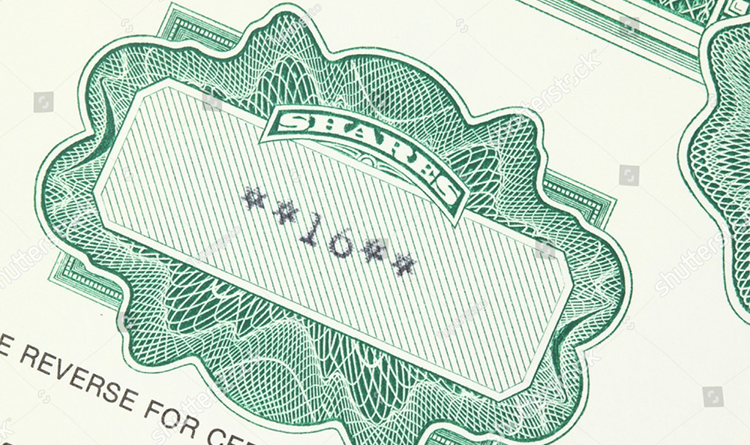By Elliot Weiss
Tax law can be complex and daunting, to be sure. But that should not stop investors and shareholders from taking the time to understand the tax benefits available to those selling (or exchanging) Qualified Small Business Company Stock (QSBS).
What Constitutes a QSBS?
QSBS is stock in a small business that may qualify for a U.S. tax benefit—codified in Section 1202 of the Internal Revenue Code—allowing sellers to avoid paying capital gains taxes on sales (or exchanges) of QSBS. In fact, for sales of QSBS issued after 2010, sellers can exclude 100% of their gains. This benefit was created to incentivize investment in qualifying small businesses. While the availability of the QSBS tax benefit is well known in the venture capital community, the topic is less understood outside the space.
To be eligible for QSBS tax treatment, companies must meet the following requirements:
Qualified Trade or Business
The QSBS tax exemption requires the issuer of the capital stock to be engaged in a qualified trade or business other than an excluded business type set forth in Section 1202 of the Internal Revenue Code. These excluded business types include those that perform services in the fields of healthcare, law, engineering, architecture, financial and brokerage services or any other trade or business in which the principal asset is the reputation or skill of one or more of its employees. Likewise, businesses involved in banking, insurance, financing, leasing, investing, farming and hospitality are also generally not treated as qualified trades or businesses (and thus ineligible for QSBS tax treatment). That being said, companies in the business of manufacturing, technology, research and development and software may qualify as QSBS.
Active Business
In addition to the general qualified trade or business requirement, a company must meet the so-called 80% Test. Pursuant to Section 1202, for a company's stock to qualify as QSBS, “at least 80 percent (by value) of the assets” of the corporation* must be used in the “active conduct of one or more qualified trades or businesses during substantially all of the taxpayer’s holding period for such stock.” Satisfying this 80% Test is oftentimes a challenge because it requires an assessment of the ongoing nature of the corporation’s business activities. Further, there is a lack of IRS guidance regarding the 80% Test, which places the burden of proof and persuasion on the taxpayer during an audit.
*Note that C corporations can issue QSBS. Partnerships and LLCs can as well, but only if they file an election to be taxed as a corporation. For their part, S corporations will not qualify, unless converted into a C corporation and then, only after such a conversion.
Gross Assets
For a company’s stock to be deemed QSBS, the aggregate gross assets of the corporation (or any predecessor entity) must not exceed $50 million. To be clear, once a company’s gross assets are north of $50 million, it can never again issue QSBS. This is the case even if gross assets dip below the $50 million threshold at a later date; however, this is a going forward restriction, meaning prior QSBS issuances made before crossing the $50 million threshold will not be precluded from the tax benefit of gain exclusion under Section 1202 just because the $50 million threshold was crossed after the prior QSBS was issued.
Original Issuance
QSBS eligibility requires the stock to have been acquired directly from the corporation in exchange for money, property or services performed (other than services performed as an underwriter). The original issuance requirement is satisfied where the QSBS is acquired directly from the corporation upon formation, during a subsequent offering, upon the exercise of options or warrants, upon conversion of convertible debt, upon distribution from a partnership, or when received as a gift or at death. Stock obtained from the secondary market or upon transfer of an existing stockholder will not be deemed originally issued.
Minimum Holding Period
To take advantage of the tax benefits set forth in Section 1202, QSBS stock must be held for at least five years prior to sale, with the holding period beginning on the date of acquisition (or the date of exercise or conversion where the original issuance stems from the exercise or conversion of convertible securities).
The Tax Benefit: Limitations on Excludable Amounts
What does all this mean if the above requirements are met and a shareholder is in possession of QSBS at the time of a proposed stock sale? At minimum, a noncorporate shareholder can exclude 50% of the taxable gain from the sale of QSBS held for at least five years. This 50% exclusion increases to 75% for QSBS acquired from February 18, 2009 through September 27, 2010, and then again to 100% for QSBS obtained on or after September 28, 2010. It is important to note that the total taxable gain that may be excluded based on the foregoing is subject to cumulative and annual limitations.
These limitations provide that for each annual year the total amount of gain exclusion is limited by the greater of (i) $10 million (reduced by the dollar amount of gain exclusions taken by the taxpayer on QSBS in prior years), or (ii) an annual limitation equal to 10x the aggregate adjusted basis of the QSBS that the taxpayer sold. Since the dollar cap on excludable gain involves the “greater of” the cumulative and the annual limitations, the annual limitation may allow the taxpayer to exclude more than a total of $10 million.
Of course, legal and tax experts can weigh in on a seller’s specific tax situation and relevant QSBS qualifications.
This blog post is not offered, and should not be relied on, as legal advice. You should consult an attorney for advice in specific situations.

